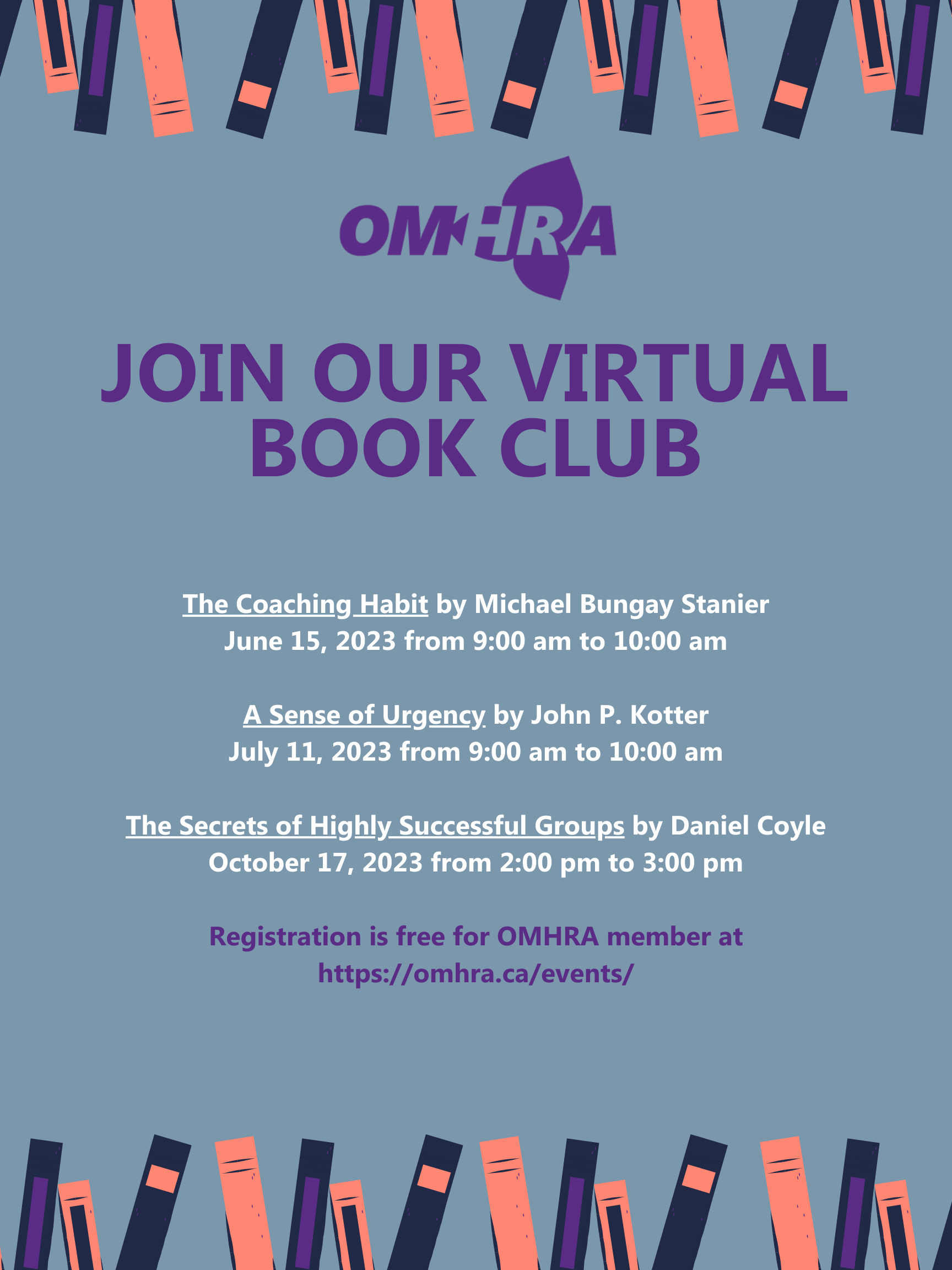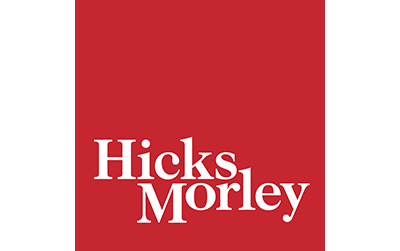
Issue #4 – JUNE 2023
HR Navigator is published the last Friday of each month

This month’s theme is Celebrating Successes: Recognition, and wow, do we have a lot to celebrate and recognize!
All year long we have made a special point of celebrating the fact that OMHRA is now 60 years young. We have rebranded, launched a new website, and developed and rolled-out a program of activities and enhanced members services aimed at celebrating this important milestone.
This year we:
- Moved to an online monthly newsletter (HR Navigator);
- Launched Discussion Forums available through our Members Lounge;
- Established Communities of Practice;
- Offered a Virtual Book Club;
- Produced a Member Directory;
- Created a Policy Repository; and
- Revamped the Terry Hallman scholarship
Other notable achievements this year have included the creation of a conference website, the restructuring of the Bargaining Guidelines report for members, increased our visibility at stakeholder events such as co-hosting the AMCTO Mental Health Forum, and increased our engagement with post-secondary institutions.
In addition, we can, and should, celebrate the fact that our recent Call for Applicants to our Board of Directors resulted in many more applicants than there are spots available. The fact that we have attracted high quality candidates, many of whom meet the special consideration criteria, is an acknowledgement of the value they see in our organization and the value we offer to our members. I am thrilled that there are so many people eager to contribute to OMHRA’s evolution and future success.
As the saying goes, the journey of a thousand miles begins with a single step. We need to celebrate the little things along the way because it all contributes to the bigger successes.
It’s with that thought in mind that I would like to acknowledge the hard work and countless contributions of our Board, our Executive Director and staff, our Education Committee and Communications Working Group members, our Sponsors, our Members, and our conference presenters and suppliers. The work you do each day has contributed to the strong and vibrant association we have today. Together we have achieved so much!
I will finish with this thought. I remember when a summer student once told one of my team members that they couldn’t believe I thanked them for a job well done. It was a good reminder that just a little reinforcement or recognition goes a long way. And while the big achievements seem to get all the attention, we should never underestimate the steps along the way, and the little fun things that we can do or say every day to create a culture of recognition and achievement.

Lori Bolton, President
Preparing Your 2023 Accessibility Report
The Accessibility for Ontarians with Disabilities Act, 2005 (AODA) is about identifying, removing and preventing barriers to inclusion for people with disabilities. By working together, we can meet the goal of making Ontario accessible for everyone.
Part of our ongoing work requires organizations to comply with accessibility standards under the AODA. If your organization has 20 or more employees in Ontario, you are legally required to file an accessibility compliance report by December 31, 2023.
Steps to reporting
Don’t wait until the last minute. Get started on your accessibility compliance report today. Filing involves three simple steps:
- Download and save the form (for your convenience, the form is also attached to this notice. Click on the arrow on the left of this notice and then on the paperclip)
- Complete the required information
- Save and submit
Start by visiting ontario.ca/AccessibilityReport to download the accessibility compliance report form.
When downloading the reporting form, right-click on “save as” and then use Adobe Reader to open it.
Before you start
You will need the following information about your organization to complete your report:
- Legal Organization Name:
- Business Number:
- Organization Category: Business/non-profit
You will then need to answer some “yes” or “no” questions.
If some answers in your report indicate that your organization is not compliant with the AODA, please proceed with filing it by the deadline. We will provide information and assistance to help you meet your accessibility requirements.
Need more information about your requirements?
Visit Accessibility rules for businesses and non-profits | ontario.ca. You can also find guides and resources about accessibility.
Notify us of changes to your organization
Organizations with fewer than 20 employees must still comply with Ontario’s accessibility laws, but do not have to file an accessibility compliance report.
You must notify the Ministry of Seniors and Accessibility if your organization has any changes, including:
- address
- contact information
- status (i.e. is no longer in operation or has fewer than 20 employees)
by submitting an Organization Profile Update form.
Questions? We can help
If you need help with filing your accessibility compliance report or would like this notice in an alternate format, please contact us at:
- Phone: 416-849-8276 or Toll-free: 1-866-515-2025
- TTY: 416-325-3408 or Toll-free: 1-800-268-7095
- Email: accessibility@ontario.ca
Thank you for doing your part to make Ontario accessible.
Sincerely,
Director, Compliance Assurance Branch
Accessibility for Ontarians with Disabilities Division
Ministry for Seniors and Accessibility

Tips to help drive engagement and boost employee loyalty
Loyal employees can be essential to the long-term success of any business. They’re usually engaged with your company, their colleagues and their work and are motivated to see your business grow and prosper. Yet, 85% of employees worldwide do not feel engaged in the workplace and that’s a problem.
Disengaged employees may not deliver the same standard of excellence as those who are highly motivated and can be damaging to customer relationships. They’re also much more likely to be hunting for a new job. Although it’s tempting to think that shedding disengaged employees from your company will lead to an improvement in company performance, this isn’t necessarily true.
Employee turnover is costly, both financially and culturally. Lost productivity, subsequent recruitment initiatives, and other inefficiencies and expenditures related to turnover total an average of $41,000 per year, though this can range significantly based on the size and specific circumstances of the business. High turnover can also add additional stress on your remaining employees as their workloads increase and company culture declines.
In contrast, when employee turnover is low, it can have a positive impact on company culture. Workers can get to know one another, and they can establish a great operational workflow that can help increase productivity and efficiency that a constant turnover of staff would make difficult to achieve.
Implementing resources and incentives to empower productivity can make all the difference; as research has shown that employees who are happier are 12% more productive and productivity has been shown to be 14% higher among engaged teams. Here are some top tips to help you drive employee loyalty within your business so that you can maintain a strong and productive team.
Hire the Right Talent.
It’s important to find employees who share the same values as your business. When your employees feel like they are a key part of a company-wide vision that’s aligned with their personal outlook, they can be more determined to help the company succeed. They may also be more likely to remain working for your business.
When recruiting, be clear about what your company values are, and why they’re an important part of your organization’s success. This will give potential candidates the opportunity to assess whether or not they’re a good fit for your culture. During the interview process, ask questions that allow candidates to demonstrate how they would respond to hypothetical situations in order to determine if they’re a good fit. Consider if they would easily integrate into your existing workforce and company culture. You want to hire individuals who will enhance your existing team, not disrupt it
Set Realistic Goals.
Goal setting is an important aspect of any business. It’s what keeps your team motivated and inspired to continue working hard. Establishing team goals also helps to build a strong company culture where every employee is working to achieve the same targets.
Individual goals that are transparent, shared and clearly ladder up to company-wide objectives can be easier to action on and more motivating to fulfill. Secondly, ensure that your employees play a role in setting their work goals. This allows each employee to think realistically and strategically about the jobs they do and how they contribute to the overall success of your company. Employees who feel that their work is valuable can be more likely to be engaged and meaningful members of their teams.
Provide Incentives and Rewards.
Employees who feel appreciated by their employer and see that their hard work is recognized can be more likely to remain loyal to the company they work for, and may be more likely to succeed within their roles. Showing gratitude, saying thank you, and offering benefits to those who are displaying hard work is important to boost employee loyalty.
While businesses search for employee loyalty, it’s equally important to show loyalty to employees. One way to do this is by investing in programs that can help support the health and wellbeing of your workforce. By providing your workforce with tools to be the best version of themselves, you can help instill trust and foster a thriving work culture.
Learn how TELUS Health Wellbeing can help move the wellness needle and support employee engagement in your organization.
OMHRA Member Spotlight
Christy Vivian MHRM, CHRL
(she/her/hers)
Human Resources Manager, County of Dufferin
OMHRA Member since 2019
 What are three adjectives your colleagues would use to describe you?
What are three adjectives your colleagues would use to describe you?
Happy and helpful, a problem solver!
If you had to state your three rules of engagement, what would they be?
Listen first, ask questions and provide great service!
Did you have an important early influencer in your life? Could you reflect on their role in shaping you and perhaps preparing you to be a resilient leader?
I participated in a year long Leadership Development program and learned a lot, about respecting differences, working in teams, how to assess others’ needs and about working with ambiguity and learning to create something from nothing. While I learned so much about myself what I also learned is what I have to offer others, and how to work with my own strengths and how, as a leader and coach, I can help others I work with be their best.
What advice do you have for people just beginning their careers in human Resource Management?
Take advantage of the professional development opportunities available through work and through your professional association to develop your technical skills and HR knowledge, and also consider opportunities for personal growth, too. Keep a record of all your learnings!!
What may surprise your colleagues about you?
I really had no idea what I wanted to do for work when I finished high school, and I continued to contemplate career opportunities throughout my University studies as an English and Psychology major. Still after graduating from University, I didn’t know and/or couldn’t focus in on career interests. I had a part time job through school as a bank teller, and that job helped me qualify for a Payroll Administrator position. Payroll Administration really opened my eyes up to the work of Human Resources!
Do you have a hobby or non-work-related activity that you think enhances your effectiveness at work?
I enjoy outside activities, walking, hiking, biking, skating, skiing, etc. the one activity outside of work that enhances my effectiveness at work is strength training. Whether its working out with weights at the gym or doing resistance training at home, I find that building physical strength also helps build mental strength and resilience, and those two qualities help me be effective at work.
What is your favourite quote?
“Life is like a camera, focus on what is important, capture the good times, develop from the negatives, and if things don’t work out, take another shot!” – Ziad K. Abdelnour
What is your favourite work of fiction?
A graphic novel/comic book entitled “What Got You Here Won’t Get You There” by Marshall Goldsmith with Mark Reiter ISBN: 978-1-61066-013-6. It’s a comic book and a story book, and it’s also a book about how successful people can become even more successful.
What book on human resource management should every practitioner read?
I would absolutely recommend ‘Now, Discover your Strengths’ by Marcus Buckingham & Donald O. Clifton, Ph.D. ISBN: 0-7432-0114-0 This book guides readers on how to discover, build and manage their strengths. The book includes a code that unlocks an internet based Strengths Finder Profile, and introduces readers their five most powerful, signature themes, from amongst the 34 StrengthsFinder themes, and illustrates how each theme translates into personal and career success.
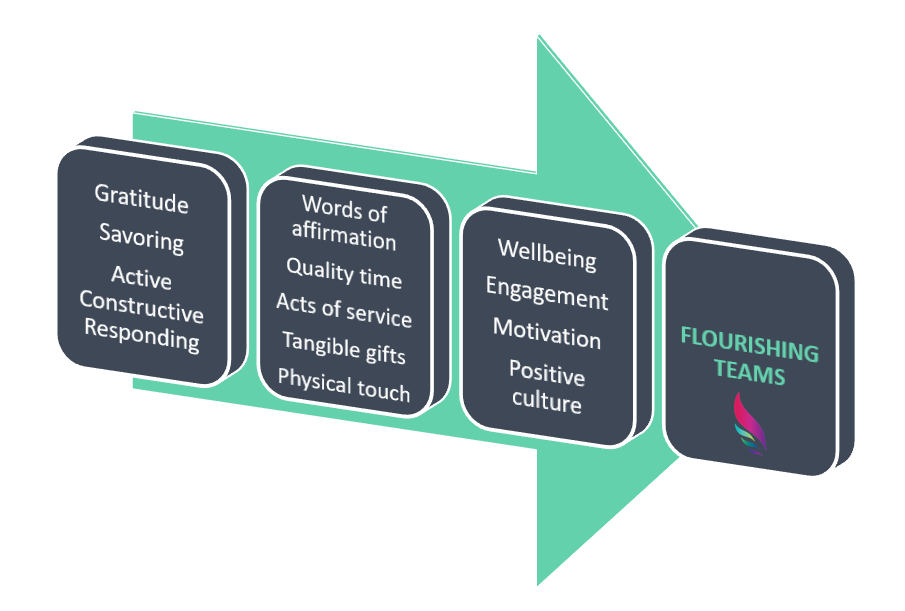
Rethinking Recognition as a Catalyst for Wellbeing
In today’s fast-paced corporate world, where deadlines loom and pressures persist, it is crucial for organizations to create an environment that fosters employee wellbeing, engagement, and motivation. One often overlooked yet powerful tool for achieving this lies in the celebration of success and the practice of genuine recognition. Let’s explore the connection between recognition, positive psychology principles, and employee wellbeing, drawing insights from Gary Chapman’s “Five Languages of Appreciation in the Workplace.”
Recognition holds significant importance in promoting employee satisfaction and overall wellbeing. However, it is important to move beyond traditional notions of recognition centered solely on financial rewards and annual events. Instead, organizations should focus on the daily small actions that leaders can take to make a meaningful difference in their employees’ lives. Positive psychology principles play a vital role in cultivating a culture of recognition and celebrating success.
Gratitude, for example, has a profound impact on individual and team performance. Encouraging leaders to express sincere appreciation and fostering a culture of gratitude within the organization can significantly contribute to employee wellbeing.
Savoring achievements, both big and small, is another aspect of positive psychology that enhances flourishing in the workplace. Embracing the art of savoring success, coupled with mindfulness practices, enables employees to relish their accomplishments and share their stories, leading to a more positive work environment.
Active Constructive Responding is a powerful communication style for amplifying positivity within the workplace. Genuine interest in the employee’s experience and constructive responses empower leaders to engage in active conversations, building a supportive and collaborative work environment that fosters employee engagement and motivation.
Along with the above-mentioned tools, Gary Chapman’s framework on the languages of appreciation at work, provides valuable insights into understanding how individuals prefer to receive appreciation. By familiarizing themselves with the five languages, HR professionals and leaders can tailor recognition efforts to meet employees’ unique needs at no additional costs.
Words of Affirmation are a potent language of appreciation. Leaders who can effectively communicate appreciation through meaningful and personalized praise can create a positive impact on employee wellbeing. The key is to be specific.
Quality Time spent with employees is another language of appreciation that fosters meaningful connections. Encouraging one-on-one interactions and team-building activities allows leaders to actively listen and be fully present, further enhancing employee engagement and satisfaction.
Acts of Service demonstrate appreciation through actions and practical support. Identifying ways to help employees in their day-to-day work promotes a culture of support and collaboration, contributing to overall wellbeing.
Tangible Gifts, when aligned with individual preferences and needs, can serve as symbolic tokens of appreciation. Balancing meaningful gestures with the organization’s resources ensures that employees feel valued and recognized. It is not the price of a gift, but the meaning behind it that adds value.
Physical Touch, when appropriate and respectful, and as simple as a high five or a handshake can be a language of appreciation for some individuals. However, it is crucial to consider boundaries and cultural considerations to create a safe and inclusive environment for all employees.
Celebrating success and recognizing employee contributions are integral to fostering wellbeing, engagement, and motivation within an organization. By embracing positive psychology principles such as gratitude, savoring, and active constructive responding, along with insights from Gary Chapman’s Five Languages of Appreciation in the Workplace, HR professionals can create a workplace culture where individuals feel valued, supported, and empowered. Remember, it is not just the grand gestures but the daily small actions that make a lasting impact on employee wellbeing and success. Let us make recognition an integral part of our organizational DNA and reap the benefits of a flourishing workforce.
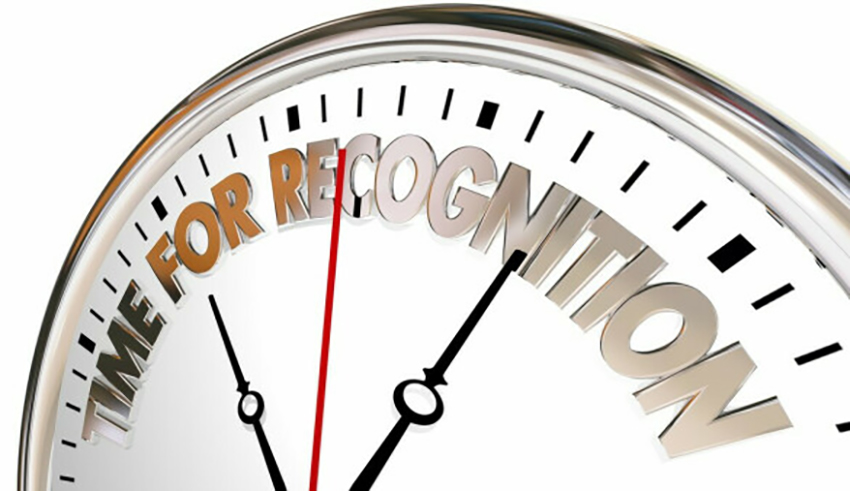
Appreciation At Work, That Works!
Talk is cheap because supply exceeds demand!
The recognition theme must be more than schmoozing, sucking up, or just a ‘glib tongue.’
Thoughts for musing!
- People seldom become what they are nagged to become.
- People become what we are encouraged to become.
Just because we think we are not nagging does not mean encouraging them. Heard the expression or used it with others – With friends like that, who needs enemies?
All authentic leadership is an inside-out job; never a title one puts on; the same is true of appreciative recognition. If it’s something to do, then it only promotes cynicism.
The first principle of appreciative recognition is MOTIVE.
Praise and encouragement must be separated, as they are light years apart. Credit focuses solely on what was achieved, whereas encouragement focuses on effort. If you and I only focus on the results, we create an environment where people focus on climbing the ladder rather than on how everyone works together.
What is our purpose in catching this person doing something well? What is our desired outcome for showing appreciation or recognizing them?
Motive always leaks out. Sometimes you and I can get caught by a glib tongue, but that usually results in even more distrust of the person the next time they say anything, whether it is appreciation or not.
Many stories of how J. Edgar Hoover ran the FBI left no question– he ran it! As a result, almost all of his subordinates sought ways to impress their powerful boss. A young FBI man was responsible for the FBI’s supply department. To cut some costs and impress his boss, he reduced the size of the office memo paper. One of the new memo sheets soon ended up on Hoover’s desk. Hoover took one look at it, determined he didn’t like the size of the margins on the paper, and quickly scribbled on the memo, “Watch the borders!” The memo was passed on through the office. For the next six weeks, it was extremely difficult to enter the United States by road from either Mexico or Canada. The FBI was watching the borders. Why was the FBI watching the borders? They thought they had received a warning from their chief. But they hadn’t. They had transformed an innocuous comment into a solemn warning.
Motive matters!
The second principle of appreciative recognition is CREDIBILITY.
Without naming names, how many of you can think of a person right now [no names, please!] who constantly tells you how wonderful you are, how much they love working with you, how awesome you are, etc.? Yet sometimes, doesn’t it feel like you need to wash after they are done? Instead of feeling appreciated, we think the opposite afterwards. Whether we call it discomfort or too schmoozy, the result is that their approach comes across like just another glib tongue.
Like the wisdom of a grandma:
“What we are speaks so loudly, people do not hear what we are saying!’
The third principle of genuine, appreciative recognition is CONTEXT.
Context is everything. Appreciation without follow-through is essentially all talk, not the walk!
Are you serious about showing respect, recognition, and appreciation? Triage is simple: look around to whom is being promoted and recognized. Are behaviours tolerated even though they are considered disrespectful and bordering on bullying?
The simple truth is that no amount of recognition and appreciation will offset the memories created when disrespect and bullying are tolerated and not resolved. When the promotions happen, the same theme will leak out of the workplace and culture.
I have heard it and seen it far too often. The leadership walks by without a nod or comment to you or me. They act like a VIP, then one day they stop to show recognition. That moment is merely a waste of their time and yours.
Recognizing the least of them is how recognition is seen, not the official moments.
The final principle of appreciative recognition is TOOLS or RESOURCES.
Appreciation at work approach leverages the ethos of “The 5 Love Languages of Appreciation in the Workplace” by Gary Chapman and Paul White. It boils down to showing others in ways they value. It recognizes them in a way that they appreciate being recognized.
Relational currency means the recognition matters; without the relationship, it is merely talking.
And talk is cheap.

Celebrating Success: Recognition
Celebrating employee accomplishments and recognizing professional achievements are essential ingredients in helping employees meet performance standards and to foster organizational success.
Highlighting employee achievements is also a key part of an employee’s performance development, and helps to advance a strong workplace culture through communication and feedback between managers and employees.
Performance development is an ongoing process that helps employees meet objectives, take accountability and assist in the achievement of organizational goals. It consists of the following managerial responsibilities:
- Planning and Objective Setting
- Informal and Formal Coaching and Feedback
- Obtaining Employee Input and Feedback
- Recognizing Achievements
- Monitoring and Following Up
- Support and Resources
Managers and supervisors are encouraged to pay particular attention to recognizing employee achievements and celebrating employee success, as employees who feel underappreciated and taken for granted can lose their motivation to achieve performance goals.
Acknowledging and celebrating when employees achieve their objectives and demonstrate improvement in their performance will send a message to all employees that the municipality is committed to supporting their success which can, in turn, increase an employee’s own motivation to succeed.
Celebrating employee success is part of a proactive approach to managing performance. Managers and supervisors are encouraged to ask themselves the following questions:
What are the key indicators of good performance?
Some of the most common indicators of good performance that managers and supervisors look for include efficiency, the ability to learn on the job, self-motivation, helping others when needed without being asked, honesty, conscientiousness, being open to feedback, having respect for colleagues, and consistently meeting deadlines.
Have these key performance indicators been clearly communicated to employees?
Most employees respond positively when tangible and achievable objectives are set and agreed upon with their manager and supervisor at the start of a performance review period.
A key part of this communication is ensuring that managers and supervisors are following up and providing support and resources. Managers and supervisors are encouraged to keep an open dialogue with employees to address obstacles, to work on strategies to respond to changing circumstances, to identify learning opportunities and to close gaps in professional development.
How often and when to recognize success?
Celebrating professional accomplishments does not necessarily depend on an official reward and recognition program. Instead, recognizing a situation well-handled, acknowledging good teamwork, and encouraging a way of working that leads to fulfillment and personal investment can contribute to overall success.
These questions can help management set employees up for positive performance development and foster a strong workplace culture in which employees take pride.
There is no one-size-fits all approach to celebrating employee success. It may be as simple as a “thank you”, or a quick email recognizing hard work. In any case, taking a proactive approach to performance development by highlighting employee accomplishments has a positive impact on the workplace by encouraging employees to bring new ideas forward, set goals, and learn from the successes of their colleagues.
These principles are helpful in guiding employees’ performance development generally. If you wish to design and implement a tailored performance development program that covers problem-solving, managerial responsibilities in performance development, and workplace resolution, please reach out to your Hicks Morley lawyer.

Regular Acts of Recognition are Critical to Municipalities Today
Now more than ever, gratitude and appreciation towards staff are vital for creating an engaged and productive workforce. Gone are the days where we can rely on pizza parties and donuts to show our appreciation for staff. And while those are still great ways to celebrate and say thank you, employees are looking for more sincere and thoughtful recognition. Even more so, they are looking for recognition on a regular and consistent basis.
This has made way for employers to shift their focus on creating a company wide culture of recognition.
In 2020, the Achievers Workforce Institute found that employees who are recognized at least once per month are 50% more engaged. This study showed that the effects of recognition on an employee’s engagement level are fleeting. One instance of recognition from your manager every six months will not make much of an impact. Engagement is stronger when there are regular acknowledgements of appreciation.
Giving recognition once a month for each of your employees may seem like a lot of work – especially if you have more than five employees – but the research shows that it will be worth it. Recognition has proven to be one of the easiest and most effective ways to keep your employees feeling valued, motivated and genuinely happy.
Recognition doesn’t need to be elaborate and it doesn’t need to take a great deal of time. Effective recognition just needs to be sincere and consistent. Some managers feel inclined to recognize their employees when a task is completed or a project is finished. But recognition doesn’t have to be given just for huge successes and wins like completing a project, it can be given while an employee is right in the middle of a project. That act of recognition can be just the motivation they need to keep going and complete the project. Recognition can be given out for meeting a professional goal or a personal milestone. For example, you can recognize your employee when they finish a course, receive their designation, or even as simple as when they purchase their first house. The more recognition you give out, the more natural it will become to you. Practice does make progress after all.
Many employers are turning to online platforms to make it easier for managers to give out recognition regularly and for employees to receive it instantly.
Recognition software is used by employers as a way to automate their recognition activities and create an environment where recognition can be given out at any time by any member of the organization. It also gives managers a dedicated space to give out recognition and attach rewards. Often managers want to give out recognition but don’t know exactly how to do it. If there is a dedicated space, that takes away some of the questions.
Adopting software like this will likely come with much apprehension and doubt. Comments like “I don’t have time to log on to another program” or “what do I have to do and how do I do it” will often come up from managers. And it can take a great deal of time to “get the hang of it” so to speak. But with training and encouragement, it will come. And once it does, it will strengthen the work environment by connecting teams and creating a company wide culture of recognition.
Recognition software is just one way to help cultivate a culture of recognition. Organizations can look at other ways to deliver recognition, but the key is to recognize staff regularly.
Making it a part of managers’ regular work routine is essential. This will ensure recognition is continuous and sincere. A recurring reminder in a manager’s calendar to reflect on recognition can be helpful.
The effects of recognition on an employee’s engagement are very short-lived and for it to be meaningful and have an impact, it should be delivered regularly and consistently. The results will be worth much more than the effort it took to recognize.
- Nobes, Caitlin. (2021) Essentials: Recognition Best Practices. https://www.achievers.com/workforce-institute/essentials-recognition-best-practices/
- Cadieux, Michelle. (2022) 6 Simple Tips to Give Effective Recognition Using Recognition Software. https://www.applauz.me/resources/tips-to-give-effective-recognition-using-recognition-software
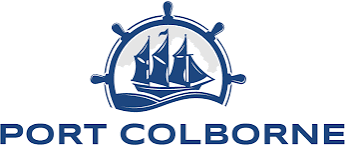
OMHRA Cocktail Recipes
This summer, whether you are entertaining or relaxing on a patio, a deck or a dock, why not raise a glass to toast OMHRA’s 60th anniversary?
We have put together the following list of cocktails which we feel best represent each of the last six decades. Many thanks to the recipe contributors. Cheers!
1960’s – Tom Collins (Perth, Lanark County)
 A classic cocktail featuring gin, lemon juice, simple syrup and club soda. The refreshing drink tastes like a spiked sparkling lemonade and is equipped with all you need to cool down on a hot day.
A classic cocktail featuring gin, lemon juice, simple syrup and club soda. The refreshing drink tastes like a spiked sparkling lemonade and is equipped with all you need to cool down on a hot day.
Ingredients
- 2 ounces Top Shelf Gin
- 1 ounce lemon juice, freshly squeezed
- 1/2 ounce simple syrup
- Club soda, to top
- Garnish: lemon wheel
- Garnish: maraschino cherry
Steps
- Add the gin, lemon juice and simple syrup to a Collins glass.
- Fill with ice, top with club soda and stir.
- Garnish with a lemon wheel and maraschino cherry (optional).
1970’s – Mai Tai (Sundridge Ontario, Parry Sound)
 The Mai Tai is one of the most famous Tiki drinks in the world. Composed of rum, orange curaçao, fresh lime juice and orgeat (a nuanced almond syrup), it’s held sway over cocktail enthusiasts and Tiki aficionados for decades. It even enjoyed a star turn in the Elvis film “Blue Hawaii.”
The Mai Tai is one of the most famous Tiki drinks in the world. Composed of rum, orange curaçao, fresh lime juice and orgeat (a nuanced almond syrup), it’s held sway over cocktail enthusiasts and Tiki aficionados for decades. It even enjoyed a star turn in the Elvis film “Blue Hawaii.”
Ingredients
- 1 cup ice cubes
- 3 fluid ounces pineapple juice
- 2 fluid ounces orange juice
- 1 (1.5 fluid ounce) Copper Head Spice Rum
- ½ (1.5 fluid ounce) coconut-flavored rum
- 1 teaspoon grenadine syrup
- Garnish: pineapple slice
- Garnish: orange slice
- Garnish: maraschino cherry
Steps
- Fill a cocktail shaker with ice cubes.
- Add pineapple juice, orange juice, spiced rum, coconut rum, and grenadine. Shake vigorously and strain into a glass full of ice.
- Garnish with pineapple slice, orange slice and maraschino cherry.
1980’s – Harvey Wallbanger (Beamsville, Niagara Region)

Ingredients
- 1 1/4 ounces vodka – Dillon’s vodka
- 1/2 ounce Galliano L’Autentico liqueur
- 3 ounces orange juice, freshly squeezed
- Garnish: orange slice
- Garnish: maraschino cherry
Steps
- Fill a tall glass with ice, then add the vodka and orange juice and stir.
- Float the Galliano on top.
- Garnish with a skewered orange slice and maraschino cherry.
1990’s – Cosmopolitan (Collingwood, Simcoe County)
 The legendary Cosmopolitan is a simple cocktail with a big history. It reached its height of popularity in the 1990s, when the HBO show “Sex and the City” was at its peak. The pink-hued, Martini-style drink was a favorite of the characters on the show. It made its debut during the second season and became a series regular after that.
The legendary Cosmopolitan is a simple cocktail with a big history. It reached its height of popularity in the 1990s, when the HBO show “Sex and the City” was at its peak. The pink-hued, Martini-style drink was a favorite of the characters on the show. It made its debut during the second season and became a series regular after that.
Ingredients
- 60mL of Georgian Bay Vodka
- 10mL triple sec
- 20mL cranberry juice
- Dash of fresh lime juice
- Orange peel twist
Steps
- Shake and double strain into a chilled glass.
2000’s – Old Fashioned, revisited (Bloom Field, Prince Edward County)
 An old fashioned is a classic whiskey cocktail with bitters, simple syrup, and fruit. Experts believe the drink is called the “old fashioned” because it’s one of the first widely known cocktails ever. The name comes from people ordering the drink the “old-fashioned way.
An old fashioned is a classic whiskey cocktail with bitters, simple syrup, and fruit. Experts believe the drink is called the “old fashioned” because it’s one of the first widely known cocktails ever. The name comes from people ordering the drink the “old-fashioned way.
Ingredients
- 2 1/2 oz Kinsip Maple Whisky
- 1/2 oz simple syrup
- 5 dashes bitters
- Splash sparkling water
- 1 peach slice
- 2 black berries
Steps
- In an old-fashioned glass, combine the simple syrup, bitters, and one peach slice. Muddle well to mix the ingredients and mash the fruit for its juice.
- Add the whisky and fill the glass with ice cubes.
- Add the second peach slice, the blackberries, and sparkling water. Stir to combine.
- Serve and enjoy.
2010’s – Whiskey Sour (Town of Oakville, Halton Region)
 Spirit, citrus and sugar—the original big three—combine to form the classic sour, one of the oldest types of cocktails. The category includes the Whiskey Sour, which has sated thirsty drinkers for more than one and a half centuries.
Spirit, citrus and sugar—the original big three—combine to form the classic sour, one of the oldest types of cocktails. The category includes the Whiskey Sour, which has sated thirsty drinkers for more than one and a half centuries.
Ingredients
- 2 ounces Maverick Barnburner Whisky
- 3/4 ounce lemon juice, freshly squeezed
- 1/2 ounce simple syrup
- 1/2 ounce egg white (optional)
- Garnish: Angostura bitters
Steps
- Add bourbon, lemon juice, simple syrup and egg white, if using, to a shaker and dry-shake for 30 seconds without ice.
- Add ice and shake again until well-chilled.
- Strain into a rocks glass or a coupe.
- Garnish with 3 or 4 drops of Angostura bitters.
2020’s – Espresso Martini (City of Peterbourough)
 If you’re looking for a pick-me-up post-dinner, the Espresso Martini is here to jolt you awake with its boozy magical powers. The cocktail has been jumpstarting outings and extending nights ever since making its debut in the 1980’s and has seen a resurgence in the 2020’s.
If you’re looking for a pick-me-up post-dinner, the Espresso Martini is here to jolt you awake with its boozy magical powers. The cocktail has been jumpstarting outings and extending nights ever since making its debut in the 1980’s and has seen a resurgence in the 2020’s.
Ingredients
- 50mL Otonabee River Spirits Triple Distilled Vodka
- 25mL coffee liqueur
- 1 shot of espresso
Steps
- Add vodka, coffee liqueur, espresso and simple syrup to a shaker filled with ice and shake until well-chilled.
- Strain into a chilled cocktail glass.
- Garnish with 3 coffee beans.
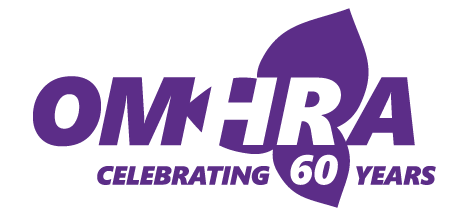
Table of Contents
- 1
- 2
- 3
- 4
- 5
- 6
- 7
- 8
- 9



